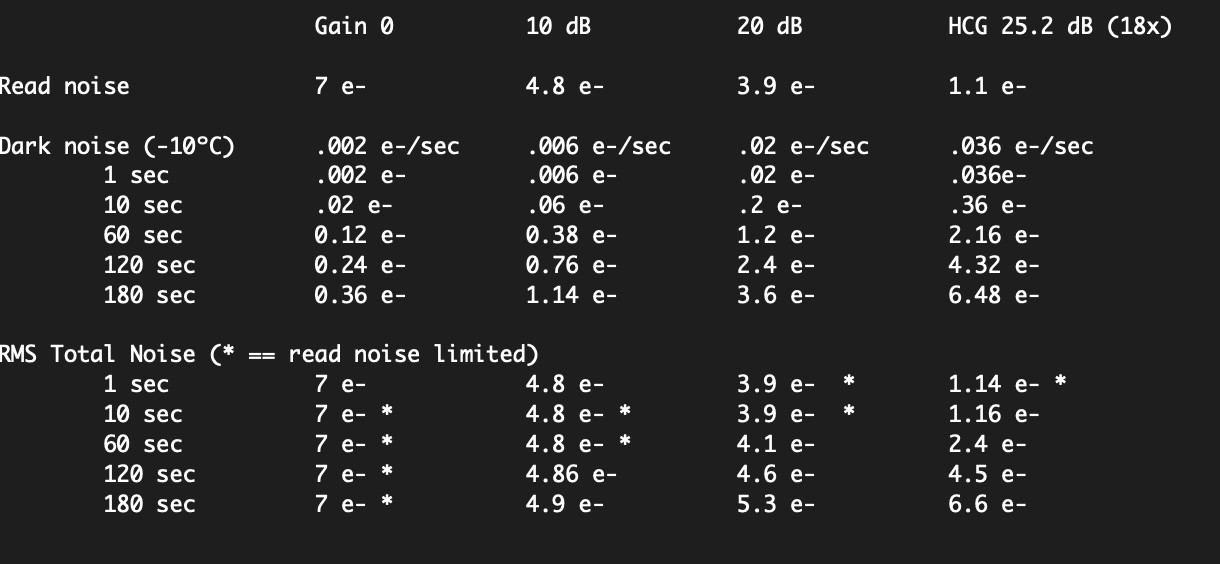ASI585MC revisted... since I want smaller pixels than the ASI2600.
I started to look at the total camera noise for each exposure duration ("shutter priority," ha ha).

Top row is the read noise (eyeballing from ZWO's grophs, which they probably took from where the sun does not shine, just like their camera windows).
Next row is the dark noise at -10ºC in terms of e-/second.
Under that are the dark current noise based on this row, for 1 sec, 10 sec, 60 sec, 120 sec and 180 second exposures.
(10 dB gain is a linear factor of 3.16 (== sqrt(10)) by the way, 20 dB is 10x, and 25.2 is close to 18x linear gain.)
Next, I sum the read noise with the dark noise -- assuming the noise are statistically independent, so total noise is sqrt(N1 * N1 + N2 * N2). Remember: we are taling about summing noise, so must use RMS instead of just adding the two noises.
The * numbers are read nois limited (i.e., read noise is so large compared to dar current noise, so dark noise is irrelavant).
Notice that one should never use this camera with gain = 0, except perhaps with 300 second type exposures (not kind to Bortle 6). Total noise at gain 0 is consistently high at, and read noise limited to, 7 e-.
Now, if you want to use 60 second exposures, by all means use HCG at 25.2 dB gain. The read noise and dark current noise balances out at around 30 second exposures. For 30 seconds, read noise = 1.1 e- and dark current noise = 1.08 e- for HCG, so it is "optimal" in some sense. I think I will try that (i.e., HCG at 30 seconds).
If you want to use longer exposures than 120 seconds, HCG is not good. The dark current noise (multiplied by the large gain) is going to eat you alive. The total noise at 120 second exposure is actually about equal for HCG and non-HCG at 20 dB gain.
At 180 second exposures, 10 dB gain actually has way less noise than HCG (4.9e- vs 6.6e-). So, 180 second at gain 10 dB might be another nice pair to use.
Short summary: to control the noise in this noisy camera, at -10ºC, use HCG for up to 120 second exposures (30 second exposure is where read noise == dark current noise). Then switch to 10 dB gain for exposures longer than that.
Native read noise (gain 0) is just crazy high, at 7 e-; so all lucky imaging will have this much noise per frame. Even the 2600 (a pretty noisy camera) has read noise around 3.5e- at 0 dB gain. What we see in practice seems to reflect that. And you can't average it out by using longer exposures either, since the dark current noise is also pretty high. Bright galaxy camera.
Chen